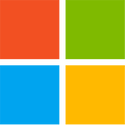
Intel Releases XeSS 2 SDK to GitHub, Lays Groundwork for Neural Rendering Support
Intel along the sidelines of the 2025 GDC announced the release of the XeSS 2 SDK on the company's GitHub page. This makes it possible for any game developer to understand XeSS 2 and integrate it with their current and upcoming games, covering features such as XeSS 2 upscaling, XeSS 2 frame generation, and XeSS 2 Low Latency. Intel released the XeSS 2 feature-set with its Arc B-series "Battlemage" graphics cards, it is backwards compatible with Arc A-series "Alchemist" discrete GPUs that support XMX matrix math acceleration. XeSS 2 uses an AI DNN to reconstruct details in upscaled images, making it technologically closer to DLSS than to AMD FSR. Next up, Intel also announced that it has updated its first-party programming guides, its Unreal Engine plugin, and its XeSS Inspector software development tool, to each support XeSS 2, including its upscaling, frame-generation, and low-latency components.
Perhaps the more important development in the Intel Graphics team right now is that the company announced that it has laid the groundwork to implement Neural Rendering, or at least the parts that are standardized under the latest updates to DirectX 12, bringing the benefits of DirectX Cooperative Vectors to game developers. It will soon be possible for 3D applications to directly address the XMX engines on Arc A-series and B-series GPUs for an up to 10x gain in inference performance for neural texture compression.
Perhaps the more important development in the Intel Graphics team right now is that the company announced that it has laid the groundwork to implement Neural Rendering, or at least the parts that are standardized under the latest updates to DirectX 12, bringing the benefits of DirectX Cooperative Vectors to game developers. It will soon be possible for 3D applications to directly address the XMX engines on Arc A-series and B-series GPUs for an up to 10x gain in inference performance for neural texture compression.









































































